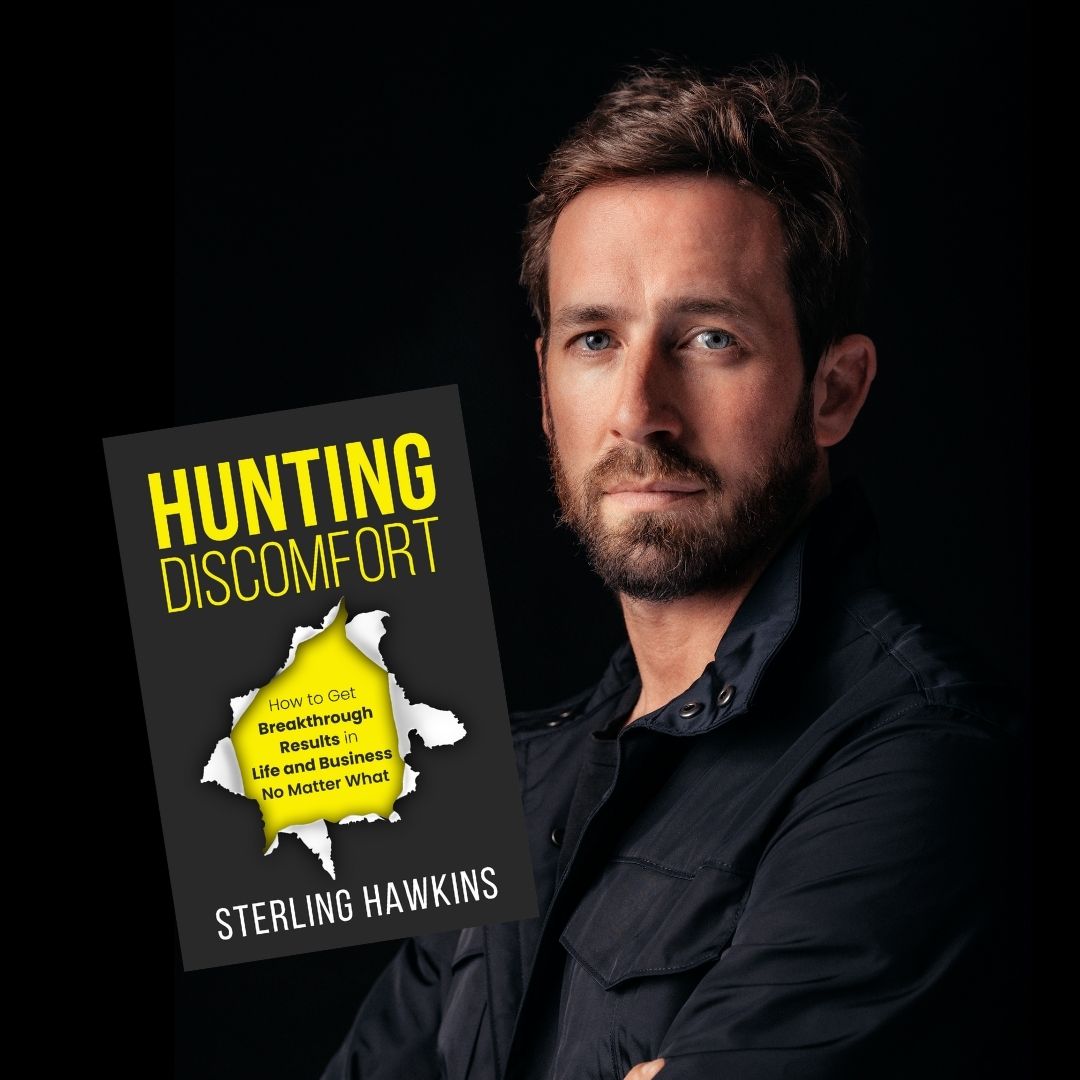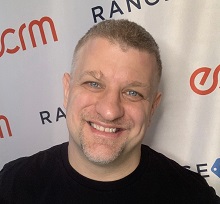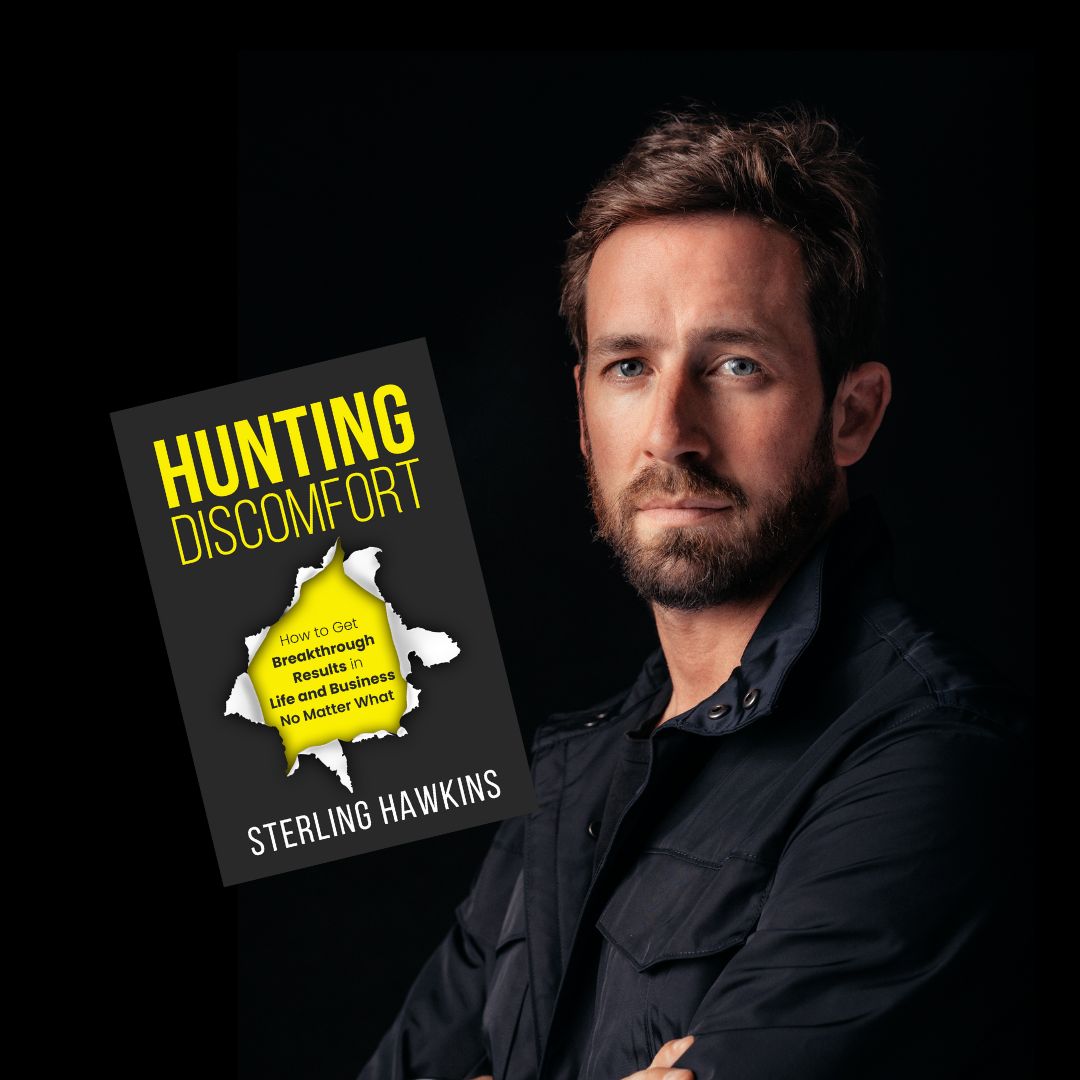Hunting Discomfort to Drive Exponential Growth in Business and Life 6/9/2022

Last month, on Memorial Day, I slid a 45-pound plate into my GORUCK backpack, threw it on, and rucked across the Triboro Bridge to Randall’s Island and back to my apartment in Astoria, Queens. It was a distance of eight miles, double what I normally do during my morning rucks.
To be honest, I wasn’t sure I’d be able to complete the trip and wondered how long it would take to get an Uber at Randall’s Island if I was too tired or achy to make it back, especially after the long, steep incline over the bridge.
But then I thought about my friend Sterling Hawkins, and how he recently completed the 4x4x48 challenge, which consists of running four miles every four hours over the course of two days for a total of 48 miles (a challenge created by former Navy SEAL David Goggins). I thought about how Sterling was able to push through the pain, push through the tiredness and find that extra energy. That helped drive me forward, putting one step in front of the other, ignoring the pain if the weight pulling on the shoulder straps of my backpack, and eventually made it home.
I committed to finishing. No Matter What.
Now, my morning rucks don’t seem so bad at all; in fact, I’ve boosted the length of them to five-and-a-half miles, as I realize now that I have more in the tank than I previously thought. And this capability has expanded to other activities, whether it's kettlebell training, working through a tough blog post, or merely having the discipline to power through my Spring cleaning purge.
Indeed, once we learn embrace discomfort, to enjoy challenges that take us out of our comfort zone, that push us past what we think are the limits are of our capabilities, we reach new levels of growth and the ability to face more challenges moving forward. This is the key theme of Hawkins’ book, Hunting Discomfort: How to Get Breakthrough Results in Life and Business, No Matter What, which is due out this month.
Sterling is a long-time friend of mine who is an entrepreneur and speaker who has grown up in the CPG retail industry and now helps organizations better perform by embracing discomfort.
We thrive on discomfort
At the heart of the book is the fact that humans were built to thrive on discomfort. When we face it, we get better, stronger, faster, more resilient. An easy example of this is weightlifting; the stress of weights on the muscles (not a comfortable thing) results in hypertrophy. The best part is, facing and overcoming challenges in one area of our lives enables us to face and overcome them in all other areas. “How humans process discomfort – whether it’s emotional or physiological discomfort – is identical,” says Hawkins. “When we boost our capacity to meet discomfort anywhere, it builds our capacity to deal with it everywhere.”
Unfortunately, we humans face a big challenge when it comes to discomfort. For the most part, we don’t like it. Our evolution has trained seek comfort and avoid potential danger – to avoid burning too much energy and to not die from predators or potentially harmful activities.
In the past, just living life provided plenty of discomfort. Nowadays, however, discomfort has been removed from our lives. In many places, food is available everywhere, and we can get it delivered while streaming movies on Netflix in a temperature-controlled and safe environment. So our capacity to deal with discomfort has dropped. We don’t use those muscles regularly. As a result, we attribute discomfort to relatively minor things, like making a presentation to our boss, or correctly wording an important email.
During my interview with Sterling (see below for the full Q&A video), we discussed how we all can drive both our personal and professional growth by intentionally introducing a little discomfort in our lives. Below are some highlights from the interview outlining some steps we can take to better position ourselves to hunt discomfort and leverage it to take us to levels of performance we’ve never before experienced.
Eliminate limiting beliefs
One of the biggest barriers to growth and positive change is our own minds – continuing to hold beliefs that no longer serve us. “The biggest changes in personal or business results don’t come from doing things, but rather from changing fundamental beliefs, changing our view of the world,” says Hawkins. “Not many people sit down on a regular basis and examine what it is they really believe about themselves or the way they do business. While those beliefs may have gotten you where you are now, are they continuing to help you grow?”
This is something that ECRM experienced firsthand. For 25 years we ran in-person sessions connecting retail buyers and brands, and when the pandemic hit, we had to really re-evaluate our business model, as it no longer served us in our environment. After much work – and getting out of our comfort zone – we pivoted to a virtual meeting platform that has impacted how buyers and sellers will engage moving forward.

Be willing to be wrong
There is a saying that if you are not failing, then you are not trying enough new things. If we are not willing to be wrong, to make mistakes, to fail, then we are never going to be able to achieve something new. One company Hawkins studied in his research, Tata Consulting, actually celebrates failure by presenting an annual award for the worst idea developed by a staff member. “They are basically paying off their biggest failure, which from a cultural standpoint, it’s calling people into the discomfort of failure,” he says. “And that’s a great way to achieve success in the long term, because it encourages people to stretch.”
Commit! (“Getting a tattoo”)
The challenge with hunting discomfort, according to Hawkins, is making the commitment to act on that which causes you to feel uncomfortable. The brain is wired to take the easiest path forward, to keep the status quo whenever possible. It’s only when we are in survival mode – when we are starving, for example – that dopamine provides the motivation to try novel solutions and take risks (to search new locations for nourishment, using the previous example). Yet we are rarely in this survival mode these days, so we have to create it ourselves, and that’s not easy. Fortunately, according to Hawkins, when you do commit to action, your brain’s reticular activation system starts looking for ways to achieve it.
Realize that self-doubt is healthy
One thing many of us face when embarking on a new challenge that takes us out of our comfort zone is self-doubt; we fear that we just aren’t up to the task. But this isn’t necessarily a negative thing, as it can lead us to put more effort into our prep. It’s completely normal to be nervous when the pressure is on. Rather than letting it cause you to avoid an uncomfortable but necessary task, simply acknowledge that the reason you feel this fear is because you understand that it’s important and prepare accordingly. Those who don’t feel this self-doubt (or pretend not to) do the opposite – they underprepare, or wing it, and don’t perform at their best.
Hawkins says felt the same way when he gave his first keynote speech at an event in Singapore. “I think one of the reasons the Singapore speech was so successful was because I became obsessed with it for several months,” he says. “All I did was practice speaking. If I had no self-doubt to spur this on, it may not have been good enough to drive my speaking career. Self-doubt is just an indication that something matters to you.”
(Hawkins has since given hundreds of presentations at events and to businesses, including a TED Talk which has garnered more than 100K views to date.)
Build a street gang
Having an accountability partner helps to stay on task, whether it’s a gym buddy, colleague, or family member. It’s why people get sponsors at self-help groups. They work. This is why Hawkins recommends building a “street gang,” a group of such people, each playing a unique role in supporting on your journey into discomfort.
“There are four main roles that are important in the world of accountability,” says Hawkins. “Direct accountability is one, but we also need someone who inspires us, someone who mentors us and maybe most importantly or fundamental to the whole thing is we need to be loved. Without these, it can be hard to make progress.”
One reason this support group is so helpful is because often when people are gearing up to attempt something big, something challenging – be it a triathlon, writing a novel or launching a new business, they will have plenty of detractors, particularly among those who don’t like seeing their peers realize exponential growth while they remain in place. So having a “street gang” of like-minded and supportive people behind you can make all the difference.
To that end, Hawkins has launched a community of like-minded people on Facebook, called The #NoMatterWhat Community. Among its members are people from all areas of life who have committed to hunting discomfort, and achieving specific goals, and they are there to support each other in these ventures.
So what discomfort are you going to hunt today, No Matter What?

